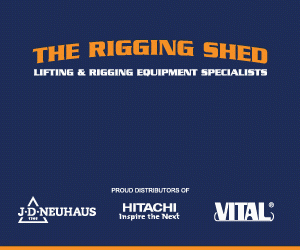)
Stay safe in Zone 2
If you are using ATEX lift trucks in Zone 2, Pyroban warns that companies should be using active gas detection to improve safety and protect people.
“In Zone 2 it is important that drivers know when a potentially explosive atmosphere is present so that the cause of the flammable atmosphere can be investigated and rectified,” says Darren Boiling, technical support manager, from explosion protection safety company Pyroban. “Active gas detection systems on lift trucks can play a vital role in this, significantly improving onsite safety.”
“However, some 3PLs [third party logistics companies] have been slow to adopt this active approach assuming that it is better to operate ATEX lift trucks that use passive, Ex d protection methods so that trucks can work through a gas or vapour release,” he continues.
In Zone 1 this passive approach can be effective because the gas or vapour is expected. However, in Zone 2 hazardous areas it is not usually expected unless there is an accidental spillage or release. This means it could be dangerous for drivers, the operation and stability of the supply chain. Active gas detection ensures that drivers know there is a problem and can act upon it accordingly.
“Even if your logistics operation is storing, handling or transporting gas or chemicals, not everywhere will automatically be designated Zone 1,” says Boiling. “It’s the activities within the operation that dictate the Zone, not the type of product handled. For safety, its vital to have your trucks converted for the correct Zone.”
Pyroban’s active gas detection solution for Zone 2 areas is system6000 involves converting the truck at a Pyroban factory in as little as six weeks. System6000 combines gas detection with various explosion protection methods and is suitable for all types of diesel and electric materials handling equipment working in logistics operations, such as VNA, pallet, picking, counterbalance and reach trucks, and more.
With system6000, the driver gets visual/audible warnings if gas or vapour is detected at 10% LEL (propane in air) prompting them to drive away from the area and raise an alert for investigation and clean up. If the gas or vapour levels rise to 25% LEL the truck will automatically be brought to a controlled stop preventing any potential explosions.
The system6000 active conversion can be implemented on most brands and types of materials handling equipment and compared to a Zone 1 conversion, it maintains more of the original truck’s features and performance. It is easier to maintain with fewer bespoke parts.
“With the benefit of easier maintenance, and with Pyroban service and support, we help logistics operations worldwide to maximise uptime and reduce the total cost of operation,” says Boiling. “We have supported many businesses in managing the smooth transition from a passive, to an active system.”









